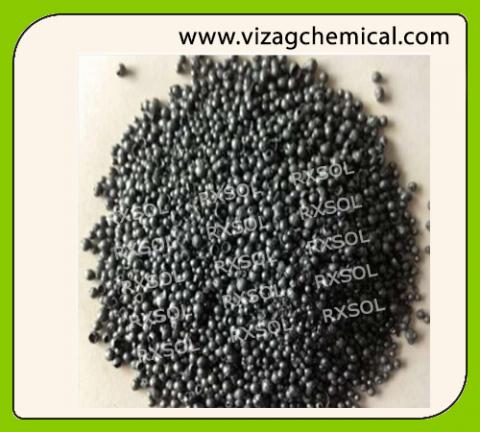Primary tabs

Iodine AR
Iodine
Iodine, a diatomic molecule (I2), is an oxidizing agent and solutions of it are frequently used in chemical analyses. Iodine suffers from low solubility in water and its volatility makes it difficult to handle directly. Both these problems are overcome by the addition of an Iodide salt (usually Potassium Iodide) which forms a Triiodide (I3-) complex with the Iodine. The Triiodide complex is extremely soluble in water and has decreased volatility.
Iodine solutions are typically standardized with Sodium Thiosulfate solutions or Arsenic Trioxide. The equation for reaction with Sodium Thiosulfate is:
See the Tech Tip under Arsenic Trioxide for information on standardization with Arsenic Trioxide.
In order to minimize errors due to oxidation of the Iodide to Iodine, titrations involving Iodine solutions should be made in the pH range of 4 - 8, and contact with air should be minimized. Because of this oxidation tendency as well as the volatility of this element even in the Triiodide form, Iodine solutions should be restandardized periodically for increased accuracy, especially after the bottle has been opened. Starch forms an intensely blue complex with Triiodide and is almost always used as the indicator when the endpoint is not determined instrumentally.
Iodine solutions can also be used to determine Sulfite, Sulfur Dioxide, or Sulfide, according to the following reactions:
In these reactions, it is better to add the Sulfite or Sulfide ion solution to an excess of acidified standard Iodine solution and then back-titrate the excess Iodine with standard Sodium Thiosulfate solution. This avoids loss of the analyte due to volatilization and thus leads to increased accuracy.
CASR No. : [7553 – 56 – 2]
EC-No. : 231-442-4
HS-No. : 2801 20 00
RTECSNN1575000
Poison class : CH ) 2
Max. Allowable Concentration ( MAK ), Air : 1.1 mg / m3
LD 50 oral rat : 14 mg / kg
Packing category : G
Road / Rail6.1 / 67 b
IMDG-Code61 / II UN 3290
IATA / DGR6.1 8 II UN 3290 CAO 615
PAX 613
Merck-Index10, 4881
Mol. Formula : I2
Mol. Weight253.81
Specific Density, 20 0C4.93 g / cm3
Bulk Density~ 2100 kg / m3
Melting Range114 0C
Boiling Point185 0C
Vapour Pressure, 25 0C0.41 hPa
Solubility in H2O, 20 0C29 mg per 100 ml
pH value ( saturated solution, H2O, 20 0C )~ 5.4
Atmospheric Susceptibilityslow sublimation
